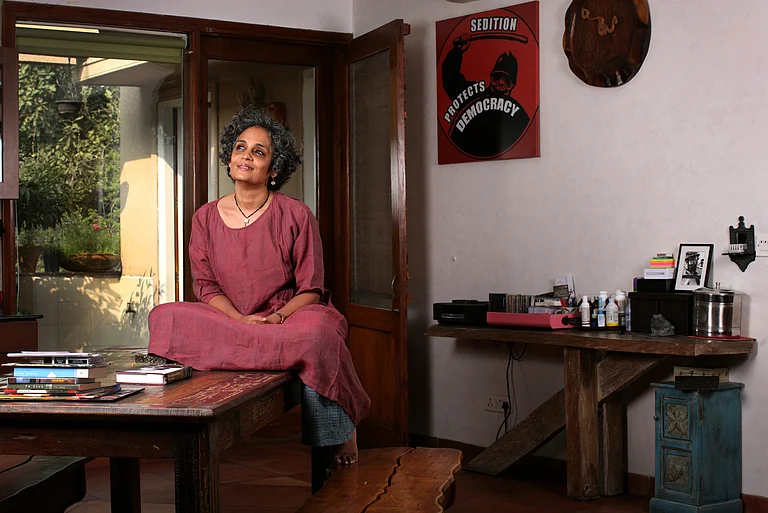In a recent social media post, author and journalist Nilanjana Bhowmick placed her latest book in context. She said that How Not to be a Superwoman could be seen as a continuation of her journey, which started with her first book Lies Our Mothers Told Us (2022). “I call it building community, sharing our [women’s] lived experiences…Let's learn and unlearn toxic socialisation together.”
How Not to be a Superwoman dissects the burden of perfection a deeply patriarchal society places on Indian women. Women are expected to be perfect mothers and daughters, perfect wives, perfect in their careers, perfect in the friendships they build. Always aspire to be a ‘superwoman’. Juggle multiple roles and workloads with a dazzling smile. This pursuit of perfection, constantly reinforced by society via both subtle and not-so-subtle messages, extracts a heavy price. Fearing societal disapproval, many women hide the toll it takes on them, carrying on in silence at the cost of their mental and physical health. This book extends a much-needed invitation to Indian women to step back, re-examine their priorities, and feel free to have conversations about the burden of perfection that crushes them.
Bhowmick never falls into the trap of sermonising. She is disarmingly candid when she shares her personal experiences as a working professional, daughter, daughter-in-law, wife and mother. Her own struggle with perfectionism and the long road she travelled to come to terms with it is simply and honestly told. She weaves in the voices of women from across India into the book, giving them a non-judgmental space to talk about their lives and the cross of perfection—which many learnt to discard over time. Reliable data and relevant studies on gender inequality, parenting, and intergenerational trauma that women experience add heft to the book.
One of the most insightful chapters in How Not to be a Superwoman is the one on how women can redefine the concept of “having it all” in order to live more satisfying, stress-free and genuinely empowering lives. It underlines the fact that there is no catchall definition of “having it all”. Despite the messages movies, television and the advertising industry have been feeding us for ages, despite the edicts society swears by, every woman is free to define “having it all” in the specific context of her life and dreams. “No one expects men to have it all because there are no ‘ors’ in their lives—just ‘ands’. Professional and personal, work and family, children and job. But for women it is always ‘either/or”’.
Aanchal, who is in her 20s, says, “I find it frustrating when people ask successful women if they can ‘have it all’ because this question is rarely posed to men…Not everyone wants to get married or have children; some may find fulfilment in their careers or with a partner and friends.” Many women who are interviewed in the book say that they are ready to change the definition of “having it all”. Some of them have found a way to prioritise themselves instead of slogging all the time and managing work, family and caregiving without complaint as ‘superwomen’ are expected to do.
Learning to say “no” is a challenge for many Indian women, but some have gone ahead and said no to toxic relationships and bad marriages, and turned down professional requests which assume they will shoulder extra responsibilities simply because they are women. “Love and respect yourself as much as you have been taught to love and respect others,” says Bhowmick. “…Say no without guilt just the way you have been taught to accept no without questioning, question and probe your guilt—is it really yours?”
That brings us to the matter of the “Guilt Factory”. Women battle several guilts, “the most consuming” of these being the caregiving guilt, which includes mother’s and daughter’s guilt. Working mothers talk about how they constantly worry they are slipping up, how the demands of job and family pull them in different direction, saddling them with “mommy guilt”. Bhowmick quotes studies that have shown how working moms often feel more guilty than working dads. Putting motherhood on a pedestal also means that women constantly feel they are being judged by an “invisible audience” about their parenting skills. In her conversations with several women in their mid-forties, Bhowmick addresses the myth of the superhuman caregiver, the “mother whose own care needs require no attention”. The interviewees share their personal experiences of letting go of the traditional, gendered social construct of a mother. Parenting is a shared activity, which requires both the father and the mother’s equal involvement. Gender roles within the family unit are not to be pigeonholed. “Every mother is different,” says Natasha. “I realized that there was no right or wrong way to be a mother.”
In the Epilogue of How Not to be a Superwoman, Bhowmick reminds women that self-love and self-value are “ongoing practices”. She shares a useful set of pointers, based on her own life journey so far, which others may find valuable. These include the importance of setting boundaries, smashing stereotypes and imposed rules of what it means to be a woman, the need to believe in yourself, the right to claim rest and leisure, and the need to figure your life out independently without the pressure of societal expectations.
The most important message How Not to be a Superwoman sends out to (Indian) women is that losing yourself while trying to keep everyone else happy is the same as being sucked into quicksand. Find your way out before you drown!





























